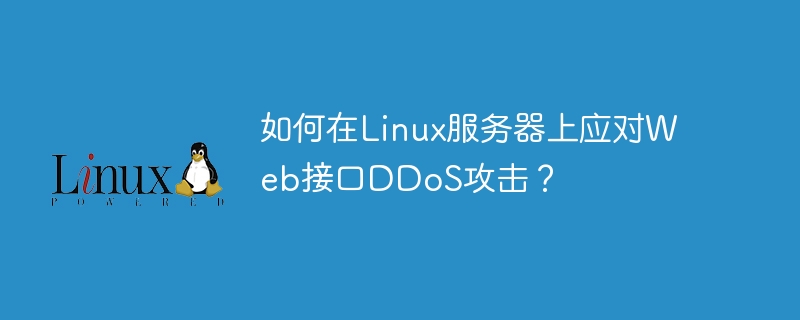
How to deal with Web interface DDoS attacks on Linux servers
With the booming development of the Internet, network security issues are becoming more and more important. Especially for those Linux servers running web interfaces, the threat of DDoS (Distributed Denial of Service) attacks is particularly serious. In this article, we will explore some effective measures to deal with web interface DDoS attacks on Linux servers.
- Strengthen server security: First, ensure that the server operating system and related software are up to date. Patches are regularly updated to fix known vulnerabilities. Additionally, protect servers and databases with strong passwords, and disable unnecessary services and ports.
- Use a firewall: The Linux server comes with a powerful firewall tool, iptables. By configuring iptables rules, you can prevent unnecessary traffic from entering the server and restrict access to the server. For example, you can restrict access to the web interface to only users with specific IP addresses.
- Use a load balancer: A load balancer can spread traffic across multiple servers to reduce the pressure on a single server. When a DDoS attack occurs, the load balancer can automatically direct traffic to other available servers to ensure that normal user access is not affected.
- Use DDoS protection services: Many cloud service providers and security service providers provide specialized DDoS protection services. These services are usually based on machine learning and behavioral analysis algorithms, capable of detecting and filtering DDoS traffic in real time, and ensuring that normal user requests can access the server normally.
- Configuring the Web server: By adjusting the configuration of the Web server, the impact of DDoS attacks can be mitigated. For example, limit the number of simultaneous connections, configure the number of Worker processes and memory limits, and enable caching and compression functions.
- Implement traffic analysis and monitoring: By using network traffic analysis tools, you can monitor your server's inbound and outbound traffic and detect potential DDoS attacks in real time. Once abnormal traffic is discovered, appropriate measures will be taken immediately to block and filter it.
- Reasonable use of CDN (content distribution network): CDN can cache and distribute static content, reducing the load on the server. Deploying the static resources of the web interface on the CDN can effectively reduce the probability of the server being attacked by DDoS and improve user access speed.
- Implement restriction policies: By configuring restriction policies, such as limiting the access frequency of IP addresses, limiting the number of concurrent connections for each user, etc., you can effectively reduce the impact of DDoS attacks on the server.
- Reasonable allocation of resources: Reasonable allocation of resources according to the server's hardware configuration and needs. By optimizing various system parameters, such as kernel and network parameters, the server's performance and resistance to DDoS attacks can be improved.
- Experiments and drills: Regularly conduct network security drills and DDoS attack simulation experiments to test the effectiveness of protective measures and promptly discover and repair potential vulnerabilities.
To sum up, responding to Web interface DDoS attacks on Linux servers requires a combination of measures, including strengthening server security, using firewalls and load balancers, using DDoS protection services, and properly configuring the Web servers, implement traffic analysis and monitoring, use CDN, implement restriction policies, reasonably allocate resources, and conduct experiments and drills. Only by comprehensively applying these measures can Linux servers be better protected from the threat of DDoS attacks.
The above is the detailed content of How to deal with web interface DDoS attacks on Linux servers?. For more information, please follow other related articles on the PHP Chinese website!






